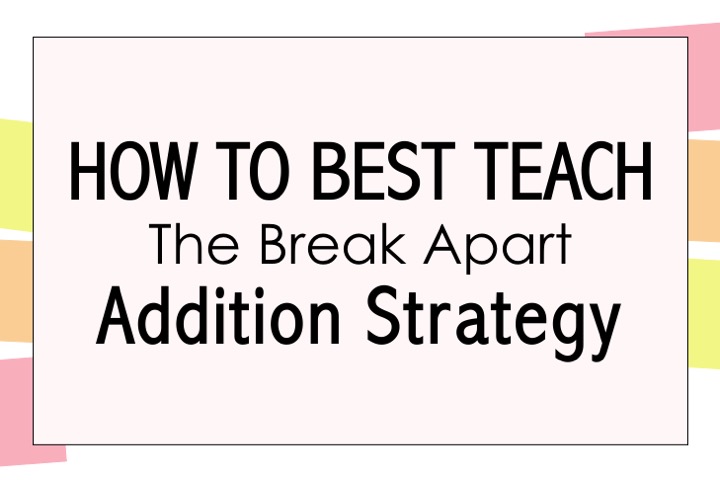
It’s a common core state standard that has 2nd grade students fluently add and subtract within 100 using strategies based on place value. One of these strategies is the break apart addition strategy.
Break Apart Addition Strategy
When I first began teaching, these strategies scared me a little. We were never taught them in school. But as I dove in, I discovered that students actually really loved the break apart addition strategy. Many students preferred it over other strategies.
After teaching this strategy to students a few times I discovered some tips that help students find success with it. And as a result, students built their number sense and understanding of place value.
I’ve learned that students find success with 2-digit addition and subtraction strategies when you teach them the mental math skills involved and emphasize common mistakes. I have a FREE guide that outlines those for each 2-digit strategy. Grab your copy here: The Ultimate Teaching Guide for 2-Digit Addition & Subtraction Strategies
Also… If you’re a parent who has a child struggling with math, you’ve got to check out Learner. Learner is an online tutoring platform that sets students up for success. To get started take a short quiz about your child’s needs. Then Learner’s Success Management Team reviews that and matches your child with the perfect tutor. Get your $25 trial here.
Break Apart Method for Addition
The addition break apart strategy involves students breaking apart 2 digit numbers into tens and ones. As we teach this strategy, we need to first make sure students know how to do this.
I like to achieve this by using base ten blocks and pictures. I will put up random 2 digit numbers on the board and then have students make the numbers with base ten blocks. I also show them how to draw the place value blocks.
Then I help them make connections between the pictures and blocks to the number. For example, I have them draw or make the number 34 with base ten blocks. I ask, “how many tens are there?” Students tell me 3 tens. I tell them 3 tens equals 30. Then I ask, “how many ones are there?” Students tell me 4 ones and I tell them 4 ones equals 4. So we write the equation 30+4.
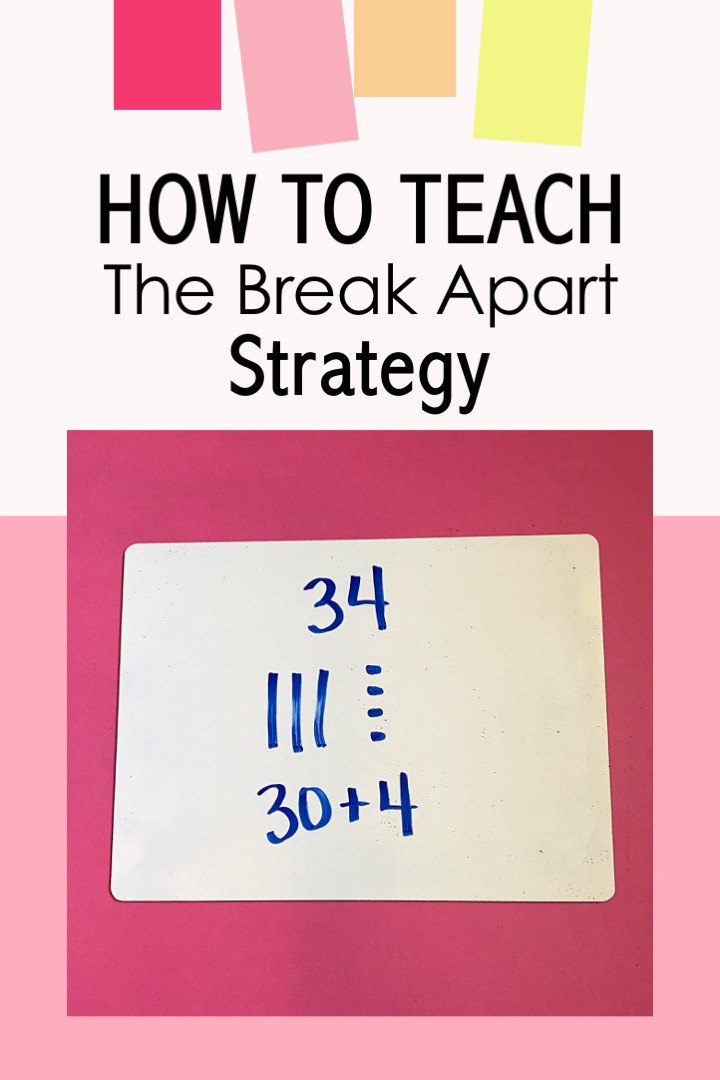
When teaching the break apart strategy, make sure to review place value with your students.
Once students get practice with this, they are ready for the break apart addition strategy. I model to students with an equation like 25 + 63. I write that up on the board and then connect boxes for the numbers, one box for the tens and another box for the ones. Then we break apart the numbers and put those numbers in the boxes. 25 has 2 tens. 2 tens equals 20 so we put 20 in the tens box. 25 has 5 ones. So we put 5 in the ones box.
Then we move to 63. 63 has 6 tens and 6 tens equals 60. So we put 60 in the tens box. 63 has 3 ones so we put the 3 in the ones box. Now we add the tens together and the ones together. 20 + 60 = 80 and 5 + 3 = 8. Finally add those two numbers together, 80 + 8 = 88.
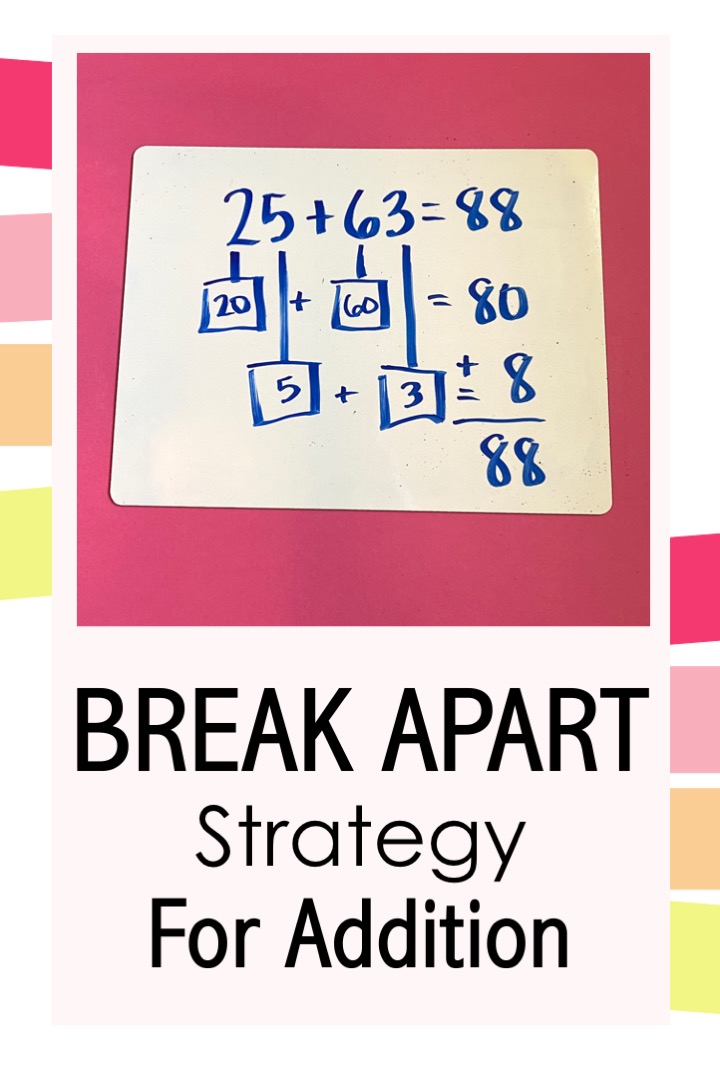
The break apart strategy for addition is a great way to have students use place value concepts to add 2-digit numbers.
I like to model this a couple times to students and show examples for when the ones numbers added together make a number that is 10 or more. For example 17+46. We break apart the numbers into tens and ones. We had the tens numbers and the ones numbers and get the equation 50 + 13. I help students use mental math by saying, “13 is a group of ten and 3 ones. 50 + 10 = 60 and 3 more is 63. So the answer is 63.”
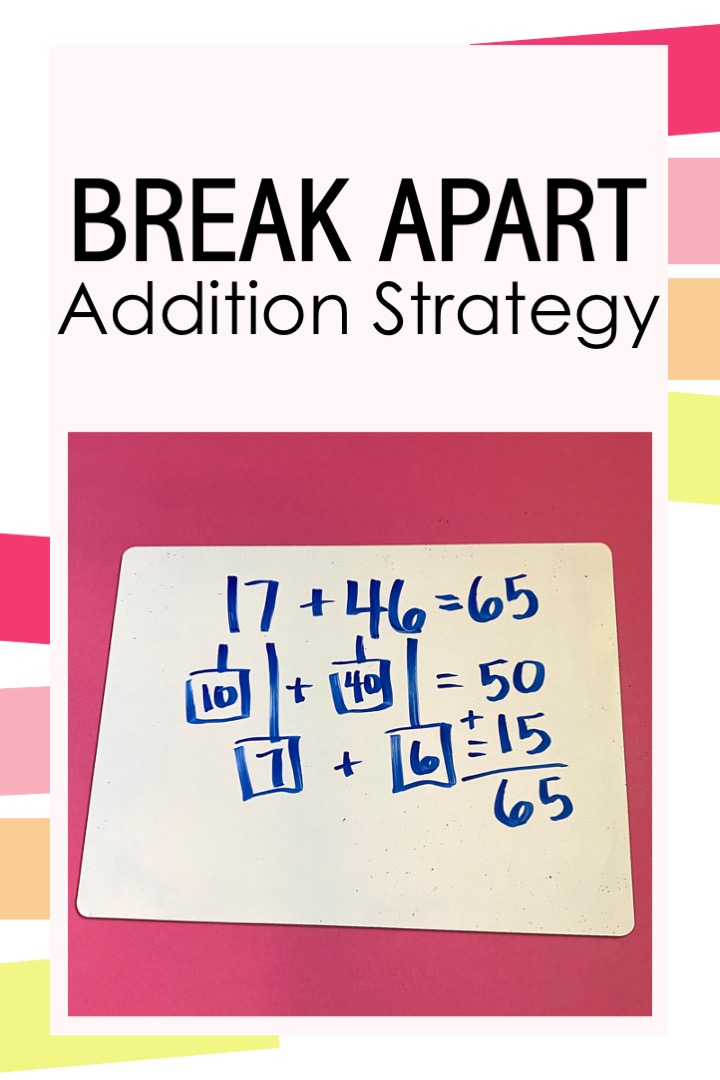
The break apart addition strategy turns out to be one of my students’ favorite addition strategies they learn in 2nd grade.
Before I give students independent practice with the addition break apart strategy, I like to make an anchor chart with them about how to use this strategy so they can reference it as they solve the equations by themselves.
Break Apart Method Addition Worksheets
I give students independent practice with worksheets and scoot activities. These worksheets have the tens and ones boxes for students so that they can just focus on the numbers. Later on I will give them worksheets without the boxes so that they can practice drawing the boxes themselves. Find these worksheets here.
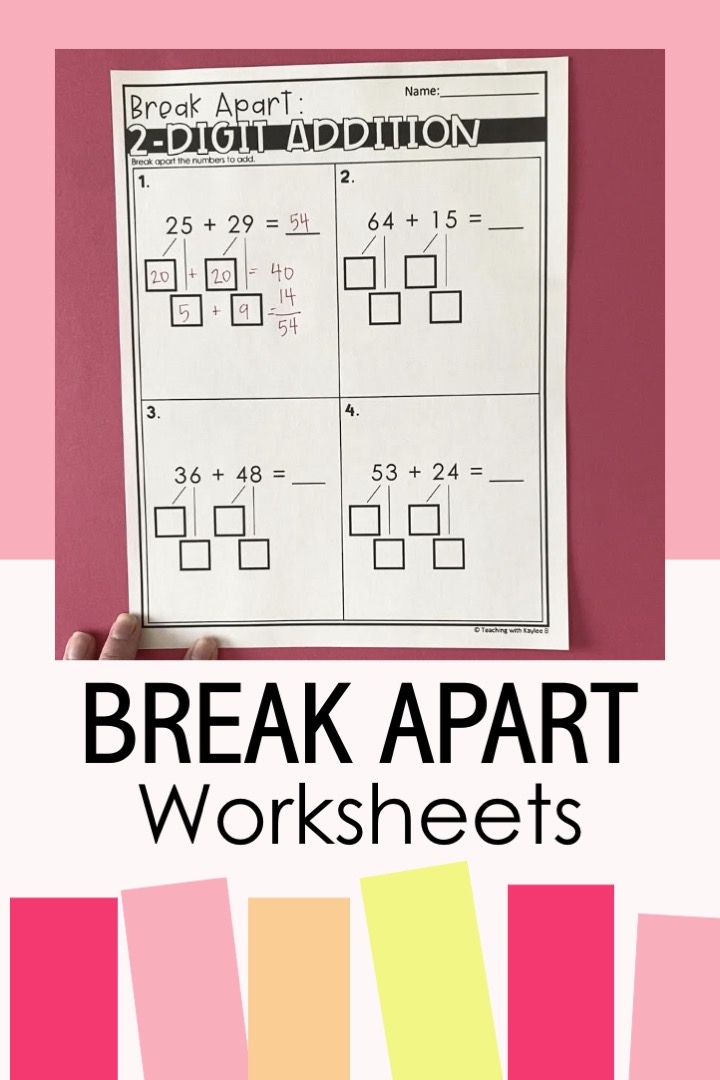
These break apart worksheets are key when getting students they need with the break apart addition strategy.
I like scoot activities because they get the students out of their chairs and moving. I tape up the equations around the room and give students a recording sheet. They go around the room solving the problems. I also walk around the room giving support to students and seeing where they need some reteaching or review. I love that I see students reference the anchor chart we made as a class as well. Find this scoot activity here.
I love how the break apart addition strategy allows students to be flexible with numbers to solve addition equations. This is just one of the many 2 digit addition strategies that I teach my students. Wondering how to teach the other strategies? Check out this blog post here: 2 Digit Addition Strategies That Work
When it comes to students using strategies or 2 digit addition and subtraction, it really helps for them to be fluent with basic addition and subtraction facts. For the best tips in teaching those, download my free workbook for 1st and 2nd grade teachers: The 7 Steps to Ensure Math Fact Fluency

Download it for free here.


